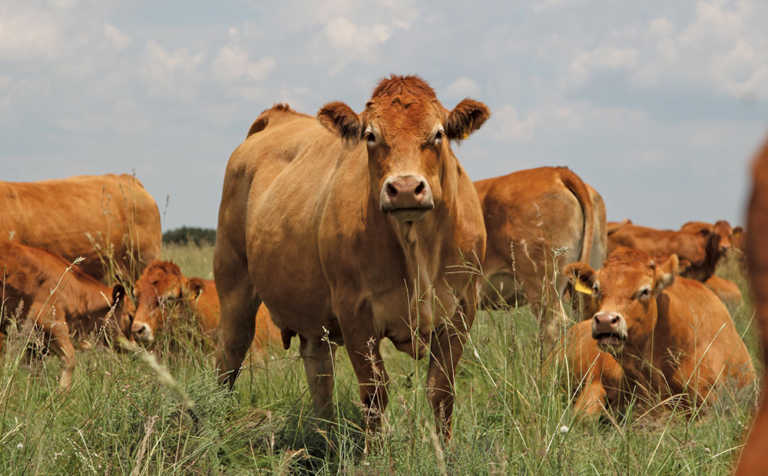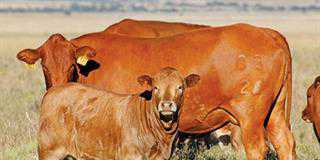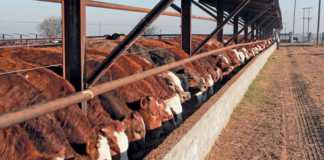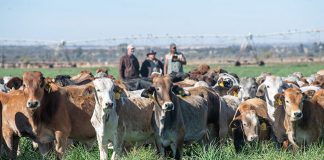
Whereas South Africa’s crop farmers are among the most efficient in the world, there is certainly room for improvement in beef production. And at the heart of this lies better record-keeping.
This is according to stud breeder Derick le Roux (25), who, with his father, Carl, owns Xourel Limousins near Lichtenburg in North West, the country’s only 5-Star Breedplan Completeness of Performance Data stud.
Once a beef producer has defined his goals and his production system, he can use information about pedigree, health, feed and marketing to improve the system and increase profits, says Derick.
“If you have 1 000 commercial cattle, say, and, through record-keeping, manage to increase your calving rate from 80% to 90% (900 calves instead of 800 calves annually), you can earn an extra R450 000/year without additional costs.
“Even if you have to employ someone to keep the records and push up the calving percentage, or pay a cattle consultant R4 000/ day, it remains profitable.”
He points out that South Africa has about 14 million head of cattle, of which between five and six million are owned by smallholders, and the average intercalving period is 700 days. Reducing this to 400 days would therefore make an immense difference.
“It would mean going from 14 million head of cattle to perhaps 17 million on the same amount of grazing, because a cow without a calf still eats roughly the same amount of grass. Livestock farmers outside the economy could become players. It all starts with keeping records.”
There is a proviso, he stresses. In order to keep ‘economically efficient’ records, a fixed breeding and calving season is necessary.
“Without a calving season, you cannot compare average weaning weights, as these will differ every three months or according to seasonal changes and nutritional state of the veld or pasture,” he explains.
Key advantages
According to Derick, keeping records will help a farmer increase profitability by:
- Using available resources optimally, especially after four to five years when the genetic potential of the herd becomes clear;
- Ensuring traceability, an important factor in exporting and selling cattle;
- Reinforcing the importance of treating each animal as a ‘production unit’ and monitoring individual performance;
- Keeping track of input costs, and thus being able to judge if the capital outlay pays dividends in the long term;
- Allowing for quick reaction to changing circumstances.
“Every cow is a production unit that must be optimised,” explains Derick. “You throw away money if you don’t use every hectare of grass optimally. A hectare of soil drinks water, whether it produces beef or not.”
Recording feeding practices, for example, will enable a farmer to determine when conditions in a pasture or veld camp increase its carrying capacity over that of others, without the need for soil sampling. Armed with this information, it becomes possible to plan the development of a herd.
“For example, nutrition during a cow’s final trimester influences the calf’s birthweight. If a calf grows abnormally, you can look at that cow’s nutrition and determine its influence.
“This is especially important in a good year, when abundant high-quality feed may influence calving,” says Derick.
Some livestock farmers know instinctively when it’s time to move animals to a different camp or pasture, but this does not mean they’re using the available resources optimally, says Derick.
Good record- keeping helps remove the guesswork from the process.
Traceability, too, is a fundamental aspect of cattle production that adds value to the product, according to Derick. “But it’s neglected locally, as farmers can’t see the direct benefit.”
When an animal receives veterinary care, Derick and his team record the date, place of treatment, dosage, reason for treatment and the type and batch number of the medicine.
“Many cattlemen don’t follow this basic procedure,” he says. “If it’s not done, and the medication doesn’t work, there are no records to fall back on if you think the supplier should take responsibility for it.
“If you want to export and can’t understand why a blood sample tests positive for a specific organism, you can simply go to the records to find the answer. Keeping good sales records is equally important.”
To illustrate, Derick provides a simple example. A farmer keeps bulls on heartwater veld, but has inoculated them and kept a record of this. He later decides to sell the animals, and states in the sales contract that the buyer should repeat the inoculation. This enables him to defend himself against legal action should the bull die of heartwater.
“Record-keeping is good business practice,” he says. “It allows you to service your guarantees, as well as to defend yourself when needed.”
Saving money
At the same time, records can help a farmer work out the running costs of every aspect of the farm.
“For example, knowing that all of your 1 000 cows calve within a 10-week period, you’ll know this equates to around 14 calves a day over 70 days,” explains Derick.
“Weighing the newborn calves, identifying their dams and ear-tagging them accordingly will take around four hours a day. Attach a cost to that. At a minimum wage of R15/hour, this will be R120/day for two workers doing that work. At around 70 days of calving, labour alone will cost R8 500.”
Record-keeping also helps a farmer to avoid being penny wise and pound foolish.
“With an efficient scale and handling facilities, two workers can weigh 1 000 calves in a day. An R80 000 scale may seem costly. But written off at R8 000/year, and with the economic benefits of weighing and tagging 800 calves, the price is not that high.
Derick discounts all expenses against their economic impact, and closely monitors input costs.
“I have to know whether a more expensive lick is worth it. If it means I can reap the benefit of its vitamins by not having to administer vitamin injections, and therefore don’t have to pay for labour to bring 1 000 cows to a kraal to do so, it may be worthwhile. But I can decide this only by studying my records.”
At the same time, record-keeping enables a farmer to determine each production unit’s economic impact.
“If you have 1 000 cows and 25 to 35 bulls, for example, you may find that only a few of your bulls can service 100 cows annually,” explains Derick.
“If some bulls are not doing their work, you’re probably overspending on them or overtaxing the other bulls. So identify those that bring in more money by siring heavier calves than others. Determine whether it would not be more beneficial to artificially inseminate with semen that may add an extra 30kg to each calf weaned.”
The objective, he stresses, is not to keep costs as low as possible, but optimise production.
“But without the underlying numbers you won’t know if artificial insemination is economically viable.”
The next step, he explains, is to study each cow. How much did it cost to buy and to maintain annually? How many calves did it produce? What did it cost to maintain them?
How much did the cow bring in when culled? “This cost alone may cover four to five years of maintenance,” he notes.
The records might even show that an apparently low-income cow could have contributed income by producing replacement heifers for the herd. In other words, a farmer will be able to judge its cumulative value. In addition, he could adjust management to enable low-income cows to become high-income animals.
Knowing the costs will also enable a farmer to make the correct decisions quickly and adapt to changing circumstances.
When a calf at Xourel contracted black quarter despite all calves having been vaccinated, Derick did not wait to see if other calves were infected or find out if the vaccine batch was faulty.
He quickly revaccinated the other 100 calves that had been grazing in the same camp, as his records told him that the vaccine for 100 calves had cost R1 500, whereas he would have lost R5 000 for each calf that died.
Flexibility
Finally, Derick points out that a producer can choose the economic criteria relevant to his system.
One farmer may want to measure kg/ha, another net profit per production unit. The bottom line, however, is that economically relevant records help to optimise production and maximise profits.
Phone Derick le Roux on 079 602 5376, or visit xourel.co.za.













